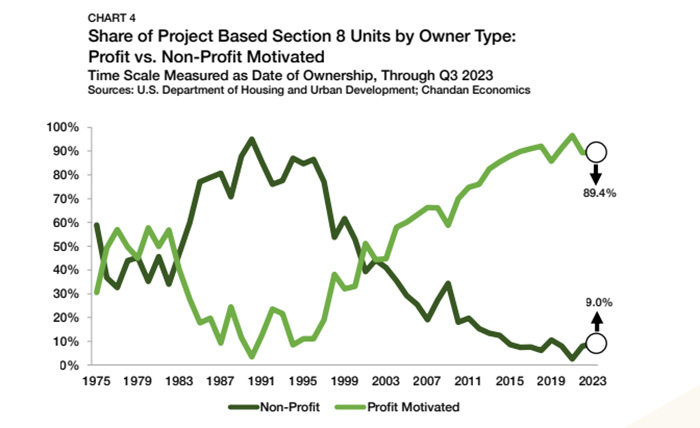
Affordable Housing Vital as 4% LIHTC Utilization Reaches New High, Arbor Reports

(Image via Arbor report)
Arbor Realty Trust, Uniondale, N.Y., released its Affordable Housing Trends Report for Fall 2023, finding that utilization of the 4% Low-Income Housing Tax Credit has reached a new high, among other notable takeaways.
Overall, there’s an urgent need for more affordable housing, and the number of households of renters living in inadequate conditions and not receiving rental assistance is up 70% over the past two decades.
The LIHTC program is the nation’s largest affordable housing resource directly addressing supply. It has two forms: the 9% tax credit for new development and the 4% tax credit for rehabilitating existing properties.
Due to a number of cost-related factors, use of the 9% tax credit has fallen, but the 4% rehabilitation tax credit has become more attractive. Through the third quarter of 2023, the 4% credit has accounted for a new high of 58% of newly HUD-insured LIHTC mortgages.
In terms of trends related to Section 8–the second-largest supply-side affordable housing initiative in the country–the report noted the share of project-based Section 8 units by owner type has shifted. From 1990-present, the share of owners entering Section 8 PBRA that are profit motivated has grown from 3.4% to 89.4%.

The largest overall affordable housing program–housing choice vouchers–accounted for 53.1% of all federally subsidized rental units in 2022, up 70 basis points from the year before.
However, the HCV program has expanded slowly and failed to keep up with need, Arbor said. Whether that will continue is unclear amid Congressional budget turmoil.
One interesting spot: Naturally Occurring and Workforce Housing. Through Q3 2023, such properties accounted for 72% of multifamily originations of units affordable at 80% or below local AMI.
Also playing into the affordable housing landscape are national and local conversations about rent control and zoning.
While eyes are on some federal developments, “the fight to add more affordable housing has become increasingly local, with state-level LIHTCs and zoning reforms gaining prominence in legislative agendas,” the report noted. “While the nation’s affordability crisis has become more acute, the attention it is attracting is helping to move the needle forward to a solution.”
The report is developed in partnership with Chandan Economics.
